To be a tree climber or arborist there are a number of knots that are vital to know. These knots are used by grounds people and climbers alike. Learning these knots in the comfort of your own home before getting on the work site will save time and frustration before getting in the tree. In this short guide, I will talk about some of the basic knots and hitches that I feel are the ones to familiarise yourself with first and what they can be used for.
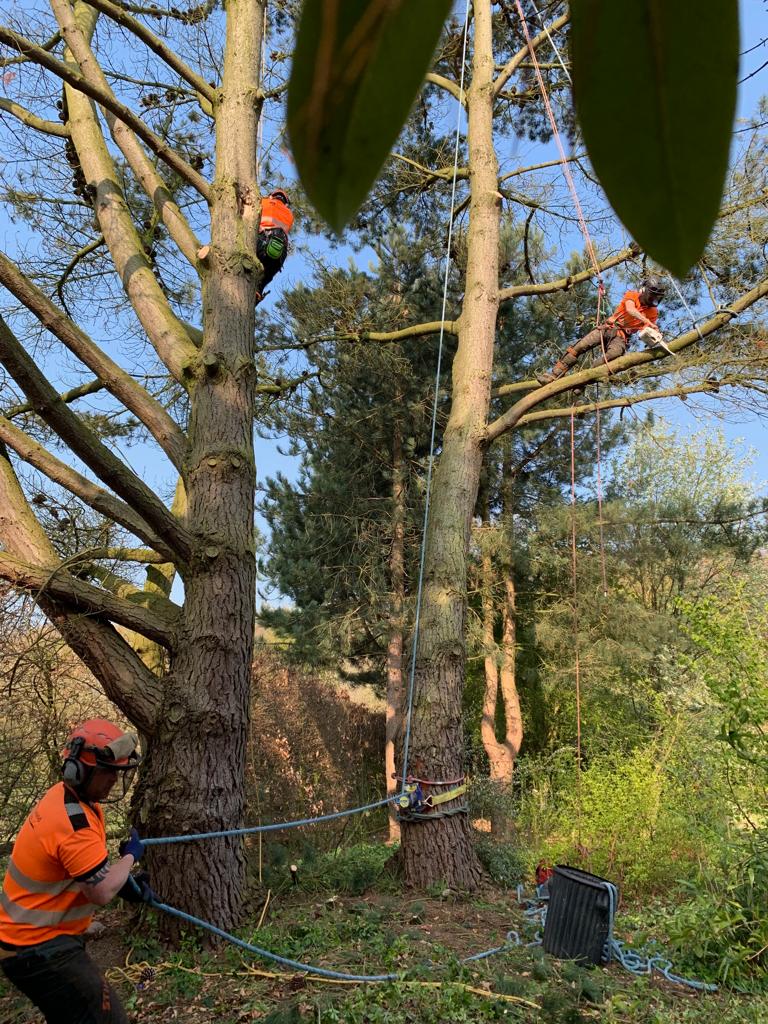
What Arborist knots should I learn?
There are a countless number of knots that can be tied with ropes, so learning some of the basic and most versatile knots for arboriculture means you can get working right away. There are variations to all the knots in this guide and by trying different ones you will find the best for your needs and application.
Bowline
By far the most important and widely used knot as a tree climber or arborist is the bowline. In my opinion, the bowline should be the only knot that is used on the climbers termination end of the main line or lifeline system. Most modern lines whether it be climbing, rigging or tag lines can be spliced but regardless of this, it’s important to know how to tie a bowline should the splice get damaged. Carabiners can easily be attached to the loop of a bowline and it is easy to untie the knot after being under load. Always ensure that a stopper knot is tied after the bowline as the knot can work loose when not under load.
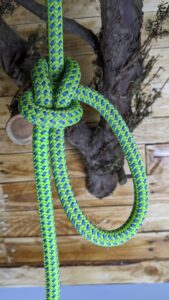
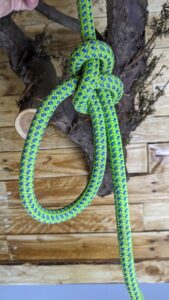

Running Bowline
The running bowline is a variation of the bowline where the tail end of the line is ‘ran’ through the loop of the bowline. This means you can cinch the rope around objects. This is commonly used for single rope (SRT/SRS) basal and canopy anchors and attaching a rope to a branch or limb when rigging.
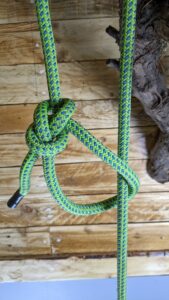

Stopper/ Barrel Knot
In terms of safety when climbing, the stopper knot is a vital knot to use – my favourite is the barrel knot. The barrel knot was one of the first knots I learned – it’s simple, quick and effective. The barrel knot is basically half a fisherman’s knot. It’s sole intention is to terminate the line or add a safety back up. I primarily use this knot at the tail end of climbing lines to ensure the hitch device does not run off the end of the line.
The barrel creates a large, tight and solid stopper knot but not to the extent that it gets caught on epicormic growth and tight forks. It’s recommended to experiment with other stopper knots to find which works for you. When using a rope larger than a 11.8mm diameter, I found that the barrel knot does become a little cumbersome however I have always used this knot at the tail of my main line regardless of rope diameter.
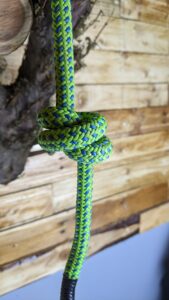
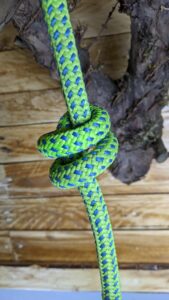
Slip Knot
I’m not talking about the Iowa based heavy metal rock band. I’m talking about the simplest of knots to tie on the list and also one of the most valuable for tree climbers and grounds people alike – the slip knot. The slip knot is tied ‘mid-line’ and primarily used for creating a loop in the line. To this loop the climber can haul attached equipment up into the tree. The slip knot can be tied with one hand and untied by sharply pulling the tail end. When the working end is pulled, the knot cinches tighter. As a grounds person in tree work this is a very important knot to learn to enable the attachment of a chainsaw and rigging equipment to the line for the climbing arborist.
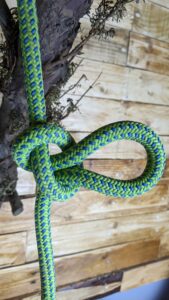
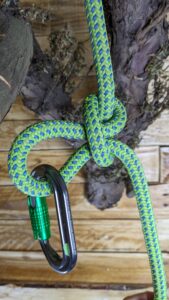
Prusik Hitch
The remaining knots on the list are hitches. These are knots that bind the rope to something else. In tree climbing this is usually a branch, log, limb or another rope.
The first one is a prusik hitch. A prusik is used to create friction between two ropes and probably has the most knot variations within the list. Again, these variations have their uses depending on it’s intended use and application. In tree climbing, the prusik is most often used to create friction as a climbing hitch to stop the climber from falling to the ground whilst still being able to advance up the line. The English prusik is one of the most common but others include the Valdotain Tresse (VT), Klemheist, Schwabisch and Distal.
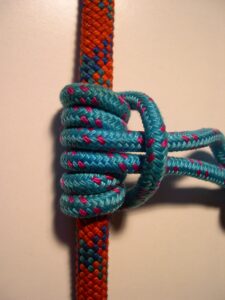

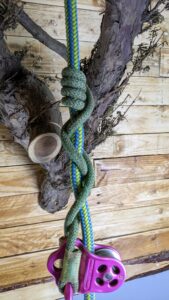
Girth Hitch
Although this is a knot I’m sure you have seen before it is often overlooked and not taken very seriously. Knowing what this knot is can be used for and when to use it can be very advantageous. The Girth hitch is very strong and does not need any type of actual knot tying. In tree climbing the girth hitch is mainly used with a loop of rope or webbing know as a sling. This can be ‘girthed’ onto a branch or carabiner extremely quickly and with practise, with one hand. The more force applied to the girth hitch the tighter it will cinch up. Again like the other knots, it is very user friendly as it can be undone quickly with minimal effort. My main applications for the girth hitch is installing a pulley for an anchor point, light rigging and setting slings for a speed line.

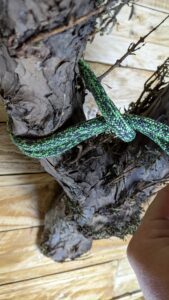
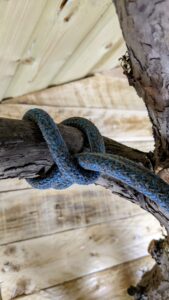
Knots are an essential part of working with ropes. Although advancements in technology and mechanical aids are ever more present in tree climbing and arb work, it’s still important to learn and practise the basics of knot tying. In doing this, you will enrich your knowledge, add more strings to your bow and it will enable you to tie and work with ropes in a rescue or emergency situation. The more knots you learn, the more versatile you will become. I hope by learning these basic knots you are equipped with some life long skills to use wherever you need them in many situations. If you would like to find more useful knots please take a look at the links below.
Useful links
Books
Arborists’ Knots for Climbing & Rigging
Other Useful Knots
Half hitch
Clove hitch
Timber hitch
Alpine butterfly
Glossary
Working end: The ‘working’ end of the rope where the knot is. The opposite end of rope to the tail end.
Tail end: The none ‘working’ end of rope
Advance: When a climber acends the tree or moving a climbing system up the rope or tree.
Prusik: A type of friction climbing hitch.